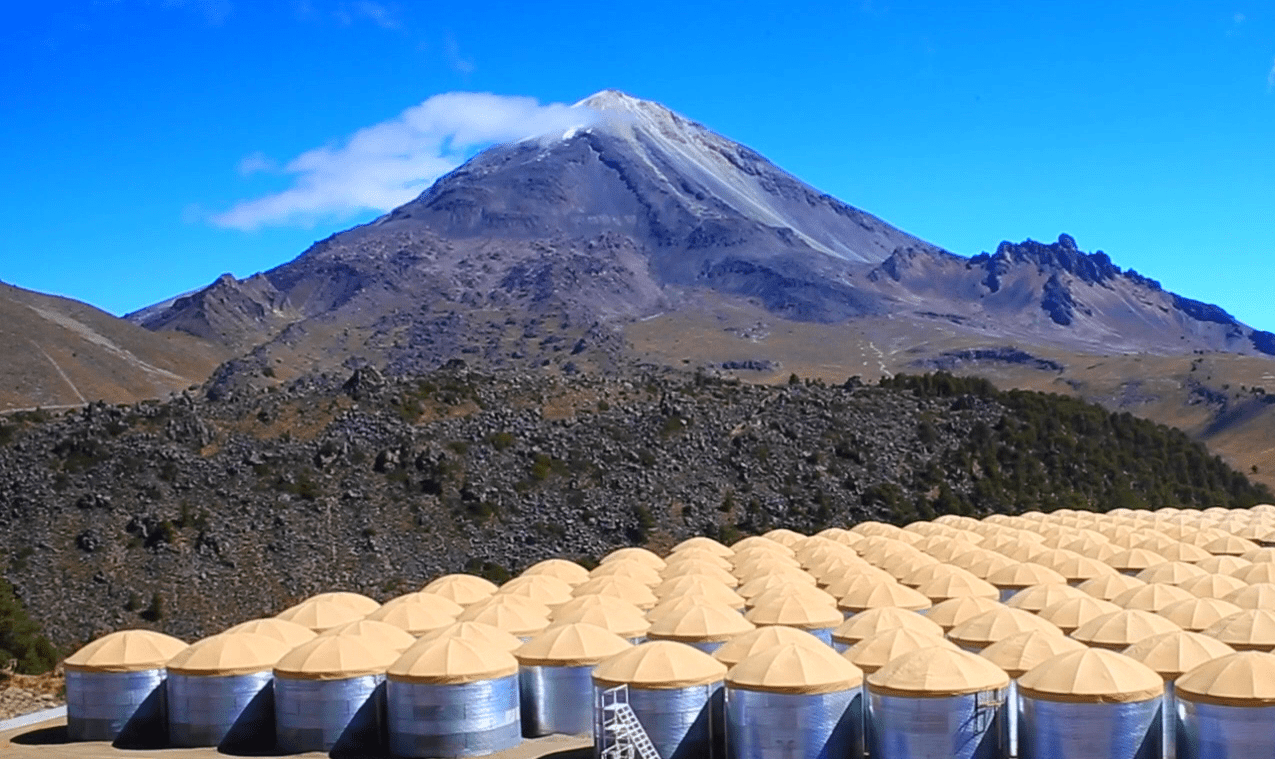
What are the highest energy photons (gamma rays) emitted by the Sun? Our star is powered by nuclear fusion and these reactions release energy on the order of megaelectronvolts, so naïvely, I would have thought that was the energy limit.
It turns out that the Sun also generates gamma rays by the acceleration of charged particles by its powerful magnetic fields — and when our star interacts with high energy cosmic rays. Indeed, stellar physicists believe that the highest energy gamma rays from the Sun are created by a combination of these two effects. High-energy cosmic-ray protons are deflected away from the surface of the Sun by the solar magnetic field. As these protons travel away from the star, they can collide with gas in the Sun’s atmosphere to create high-energy photons that can then continue on to Earth.
Now, physicists working on the High-Altitude Water Cherenkov (HAWC) say that they have spotted the highest-energy gamma rays ever to be seen coming from the Sun. These photons have energies in the teraelectronvolt regime – or a million times more energetic than my naïve prediction. What is more, the researchers observed many more of these high-energy photons than expected. You read more about this latest solar observation in Physics.
HAWC on video
HAWC is located in Mexico near the peak of the extinct Sierra Negra volcano. The observatory cuts a spooky image against the Mexican countryside, comprising 300 giant silver barrels with yellow tops that are filled with water. We have produced a video about HAWC and you can watch it here: “Faces of Physics: a HAWC eye on the sky”.
If you want to stay as cool as possible on a sunny day, white clothing is recommended. This is because the white pigment in the fabric reflects more sunlight that darker materials. But what if white is not your colour – could some clever scientists create darker clothes that are also good at reflecting sunlight? The answer is yes, with a little help from butterflies.

Guo Ping Wang from Shenzhen University in China and colleagues have created coloured films that absorb very little light. They did this using “structural colour”, which is created when a surface is covered with an array of nanostructures that interact with light. This effect appears widely in nature, giving the wings of some butterflies (and the feathers of some birds) their vibrant colours.
By using the appropriate arrays, Wang and colleagues created surfaces that had both deep colours and reflected nearly all of the light that fell on them. As a result, they were able to lower the temperature of colourful objects to 2 °C below the ambient temperature. In the case of a blue object left in the sunshine all day, its temperature was a whopping 26 °C degrees cooler that a similar object painted with blue car paint.
“With our new films, excellent cooling performance can be achieved, no matter the desired colour, saturation or brightness,” claims Wang. “They could even be used on textiles to create clothes of any colour that are comfortable in hot temperatures.”
The films were also tested on the roof of a building, where they were found to be 35 °C cooler than the roof itself on summer days – something that could be used to create more energy efficient buildings.
You can read about the films in an open-access paper in the journal Optica.
